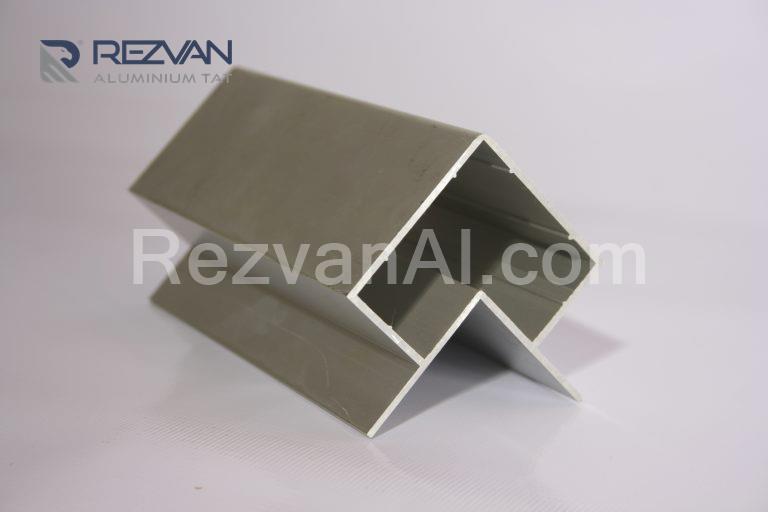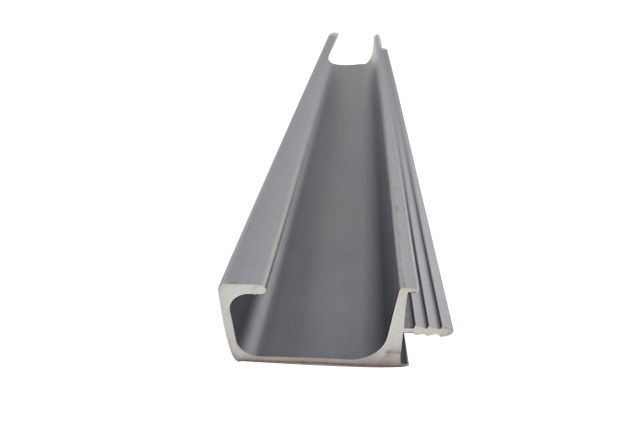Minerals & Metallurgy
Minerals are naturally occurring, inorganic substances with a specific chemical composition and a crystalline structure. They form through geological processes, and their characteristics are defined by their chemical composition and the way their atoms are arranged. Minerals can be found in a variety of environments, including rocks, soil, and water.
Key characteristics of minerals include:
1. Inorganic Nature: Minerals are not derived from living organisms; they are formed through geological processes.
2. Crystalline Structure: Minerals have a specific and orderly arrangement of atoms, forming a crystalline structure.
3. Chemical Composition: Each mineral has a definite chemical composition, meaning it consists of specific elements in fixed proportions.
4. Naturally Occurring: Minerals are naturally formed and occur in the Earth's crust, although some can also be found in extraterrestrial environments.
Minerals are essential components of the Earth's crust and play crucial roles in various geological processes. They have economic importance due to their use in industry, construction, and manufacturing, and they also contribute to the nutritional requirements of living organisms. Examples of minerals include quartz, feldspar, calcite, and various types of ores containing valuable elements like iron, copper, and gold.
Inorganic nature" refers to the characteristic of substances or compounds that are not derived from living organisms. Inorganic compounds are distinct from organic compounds, which are carbon-based and often associated with living organisms. Here are key points regarding the inorganic nature of substances:
1. No Carbon-Hydrogen Bonds: Inorganic compounds typically do not contain carbon-hydrogen (C-H) bonds. Organic compounds, on the other hand, always contain carbon and hydrogen bonded together.
2. Minerals: Many minerals, rocks, metals, and simple compounds like salts are examples of inorganic substances. They form through geological processes rather than biological processes.
3. Synthetic Inorganics: While the term is often associated with naturally occurring substances, it also encompasses synthetic inorganic compounds created through chemical processes.
4. High Melting Points: Inorganic compounds tend to have higher melting and boiling points compared to organic compounds.
5. Ionic Bonding: Inorganic compounds commonly exhibit ionic bonding, where electrons are transferred between atoms, resulting in the formation of ions.

Examples of inorganic substances include minerals like quartz, metals like iron or copper, salts like sodium chloride, and many synthetic compounds used in various industries. Understanding the inorganic nature of a substance helps classify and differentiate it from organic compounds.
Crystalline structure refers to the orderly arrangement of atoms, ions, or molecules in a repeating pattern that extends throughout the entire substance. This arrangement results in the formation of a crystal lattice, which is a three-dimensional geometric structure. Crystalline structures are a characteristic feature of minerals, metals, and many solid materials. Here are key points about crystalline structure:
1. Repeating Pattern: In a crystalline structure, the arrangement of particles repeats in a predictable and systematic manner.
2. Long-Range Order: The repeating pattern extends over a long range, giving the material a uniform and organized structure.
3. Regular Geometry: The arrangement of particles follows regular geometric shapes, contributing to the symmetry of the crystal lattice.
4. Distinctive Properties: Crystalline materials often exhibit distinct physical properties, such as well-defined cleavage planes, optical properties, and characteristic X-ray diffraction patterns.
5. Examples: Common examples of crystalline materials include minerals like quartz, metals like iron, and salts like sodium chloride (table salt).
6. Crystalline vs. Amorphous: In contrast to crystalline structures, amorphous structures lack long-range order. Amorphous materials, such as glass, do not have a regular repeating pattern.
The study of crystalline structures is important in various scientific fields, including mineralogy, chemistry, and materials science. X-ray crystallography is a widely used technique to determine the atomic and molecular arrangement within crystalline materials.
Metallurgy is the branch of science and technology that deals with the extraction, production, and processing of metals and alloys. It involves various processes that transform raw materials into metal products suitable for use in various applications. Metallurgy plays a crucial role in modern industry and manufacturing. Key aspects of metallurgy include:
1. Ore Extraction: Metallurgy begins with the extraction of metal ores from the Earth's crust. Ores are rocks or minerals that contain economically valuable metals.
2. Mineral Processing: Extracted ores go through processes such as crushing, grinding, and concentration to separate the metal-bearing minerals from the rest of the ore.
3. Smelting: Smelting involves heating the concentrated ore to high temperatures to extract the metal in a more refined form. Commonly used smelting methods include blast furnaces and electric arc furnaces.
4. Refining: The extracted metal may undergo further refining processes to remove impurities and achieve the desired properties. This can include processes like electrolysis or chemical refining.
5. Alloying: Metallurgists often create alloys by combining different metals or adding non-metallic elements to enhance the properties of the material. Common alloys include steel, brass, and bronze.
6. Casting and Forming: The final step involves shaping the metal into usable products through casting, forging, rolling, or other forming processes.

Metallurgy is applied in various industries, including manufacturing, construction, aerospace, automotive, and electronics. Advances in metallurgical techniques have led to the development of new materials with improved strength, durability, and other desirable properties.
Mineral separation is a process in mineral processing that involves separating valuable minerals from the surrounding rock (gangue) or from each other. The goal is to concentrate the valuable minerals and create a product that is suitable for further processing or refining. Several techniques are employed for mineral separation:
1. Gravity Separation: Exploits the differences in density between minerals to separate them. Common gravity separation methods include jigging, shaking tables, and spirals.
2. Magnetic Separation: Utilizes the magnetic properties of certain minerals to separate them from non-magnetic minerals. This is often used to concentrate magnetic minerals such as magnetite.
3. Froth Flotation: Relies on the differences in surface properties between minerals. Air bubbles are introduced into a pulp, and certain minerals attach to the bubbles, allowing them to be separated from the rest of the slurry.
4. Electrostatic Separation: Separates minerals based on their electrical conductivity. Charged particles are deflected by an electric field, allowing for separation.
5. Chemical Separation: Involves the use of chemicals to selectively dissolve or react with specific minerals, leaving others unaffected. This can be applied in processes like leaching or precipitation.
The choice of a particular separation method depends on the characteristics of the minerals involved and the specific requirements of the ore. Successful mineral separation is crucial for efficient mineral processing and plays a key role in the economic viability of mining operations.
Key characteristics of minerals include:
1. Inorganic Nature: Minerals are not derived from living organisms; they are formed through geological processes.
2. Crystalline Structure: Minerals have a specific and orderly arrangement of atoms, forming a crystalline structure.
3. Chemical Composition: Each mineral has a definite chemical composition, meaning it consists of specific elements in fixed proportions.
4. Naturally Occurring: Minerals are naturally formed and occur in the Earth's crust, although some can also be found in extraterrestrial environments.
Minerals are essential components of the Earth's crust and play crucial roles in various geological processes. They have economic importance due to their use in industry, construction, and manufacturing, and they also contribute to the nutritional requirements of living organisms. Examples of minerals include quartz, feldspar, calcite, and various types of ores containing valuable elements like iron, copper, and gold.
Inorganic nature" refers to the characteristic of substances or compounds that are not derived from living organisms. Inorganic compounds are distinct from organic compounds, which are carbon-based and often associated with living organisms. Here are key points regarding the inorganic nature of substances:
2. Minerals: Many minerals, rocks, metals, and simple compounds like salts are examples of inorganic substances. They form through geological processes rather than biological processes.
3. Synthetic Inorganics: While the term is often associated with naturally occurring substances, it also encompasses synthetic inorganic compounds created through chemical processes.
4. High Melting Points: Inorganic compounds tend to have higher melting and boiling points compared to organic compounds.

Crystalline structure refers to the orderly arrangement of atoms, ions, or molecules in a repeating pattern that extends throughout the entire substance. This arrangement results in the formation of a crystal lattice, which is a three-dimensional geometric structure. Crystalline structures are a characteristic feature of minerals, metals, and many solid materials. Here are key points about crystalline structure:
2. Long-Range Order: The repeating pattern extends over a long range, giving the material a uniform and organized structure.
3. Regular Geometry: The arrangement of particles follows regular geometric shapes, contributing to the symmetry of the crystal lattice.
4. Distinctive Properties: Crystalline materials often exhibit distinct physical properties, such as well-defined cleavage planes, optical properties, and characteristic X-ray diffraction patterns.
5. Examples: Common examples of crystalline materials include minerals like quartz, metals like iron, and salts like sodium chloride (table salt).
6. Crystalline vs. Amorphous: In contrast to crystalline structures, amorphous structures lack long-range order. Amorphous materials, such as glass, do not have a regular repeating pattern.
Metallurgy is the branch of science and technology that deals with the extraction, production, and processing of metals and alloys. It involves various processes that transform raw materials into metal products suitable for use in various applications. Metallurgy plays a crucial role in modern industry and manufacturing. Key aspects of metallurgy include:
4. Refining: The extracted metal may undergo further refining processes to remove impurities and achieve the desired properties. This can include processes like electrolysis or chemical refining.
5. Alloying: Metallurgists often create alloys by combining different metals or adding non-metallic elements to enhance the properties of the material. Common alloys include steel, brass, and bronze.
6. Casting and Forming: The final step involves shaping the metal into usable products through casting, forging, rolling, or other forming processes.

Mineral separation is a process in mineral processing that involves separating valuable minerals from the surrounding rock (gangue) or from each other. The goal is to concentrate the valuable minerals and create a product that is suitable for further processing or refining. Several techniques are employed for mineral separation:
2. Magnetic Separation: Utilizes the magnetic properties of certain minerals to separate them from non-magnetic minerals. This is often used to concentrate magnetic minerals such as magnetite.
3. Froth Flotation: Relies on the differences in surface properties between minerals. Air bubbles are introduced into a pulp, and certain minerals attach to the bubbles, allowing them to be separated from the rest of the slurry.
4. Electrostatic Separation: Separates minerals based on their electrical conductivity. Charged particles are deflected by an electric field, allowing for separation.
5. Chemical Separation: Involves the use of chemicals to selectively dissolve or react with specific minerals, leaving others unaffected. This can be applied in processes like leaching or precipitation.
FAQs
What are minerals?
Minerals are naturally occurring, inorganic substances with a specific chemical composition and a crystalline structure.
Where can we find minerals?
Minerals can be found in a variety of environments, including rocks, soil, and water.
What is the importance of minerals?
They have economic importance due to their use in industry, construction, and manufacturing,
What are minerals include ?
Examples of inorganic substances include minerals like quartz, metals like iron or copper, salts like sodium chloride, and many synthetic compounds used in various industries.















.jpg)

.jpg)

